Ministry of Coal
Steel is the Backbone of India’s Economy, Coal and Mines Sector is the Strong Foundation on Which it Stands: Union Minister G Kishan Reddy
Coal Gasification is Being Promoted as an Alternative, with a Target of 100 MT by 2030
Minister Urges Industry Partners to Actively Engage in Auction of Coking Coal Blocks
Posted On:
26 APR 2025 2:56PM by PIB Delhi
Union Minister of Coal and Mines, Shri G. Kishan Reddy, addressed the 6th edition of India Steel, a premier biennial International Exhibition-cum Conference on the steel sector, in Mumbai Today. The International Exhibition-Cum-Conference on Steel served as a significant platform for dialogue among policymakers, industry leaders, academia, researchers, and civil society on the evolving dynamics of the steel sector and its symbiotic relationship with the coal industry.

In his keynote address, Union Minister of Coal and Mines, Shri G.Kishan Reddy emphasized that steel serves as the backbone of India's economic progress and a vital enabler of the national vision for Viksit Bharat 2047. He highlighted how India is setting new global benchmarks in infrastructure development, from the Chenab Bridge in Jammu & Kashmir, the world’s highest railway bridge, to the historic Pamban Bridge in Tamil Nadu—all made possible by the growing strength of the steel sector. Every milestone in the nation's infrastructure journey, he remarked, is forged in steel—reflecting the momentum and aspirations of a Nation on the move.
He adds that India’s steel sector has grown at an impressive pace in recent years, positioning the country as the second-largest steel producer globally. Citing the words of Prime Minister Shri Narendra Modi, the Minister referred to steel as India's "Sunrise Sector" a key driver of domestic consumption, industrial expansion, and self-reliance through the Atmanirbhar Bharat Abhiyaan.
Shri Reddy emphasized that if steel forms the backbone of India’s economy, the coal and mining sector represents the strong foundation on which it rests. He highlighted the importance of raw material security, especially in the context of the current session on Raw Material Strategy and the Shift in Raw Material Mix. Ensuring the availability of critical raw materials like iron ore, coking coal, limestone, and essential alloying elements such as manganese, nickel, and chromium, he noted, is both an economic necessity and a strategic imperative.
India recently achieved a landmark milestone of 1 BT of coal production and dispatch in the last financial year—a transformative step toward national energy security. Energy Statistics 2025 reveal that coal continues to account for nearly 60% of India’s total energy requirements and 70% of its electricity generation. While efforts to enhance renewable energy are underway, the Minister reaffirmed that coal will remain central to India’s energy and industrial landscape in the foreseeable future.
Focusing on coking coal, a critical input in steel manufacturing, Shri Reddy pointed out that it constitutes nearly 42% of steel production costs. India currently imports around 85% of its coking coal needs, rendering the industry vulnerable to international price volatility and supply chain disruptions. In response, the Government launched the Mission Coking Coal in 2021, aimed at reducing import dependency, targeting 140MT of domestic production, and increasing blending of domestic coal from 10% to 30% in steelmaking by 2030.
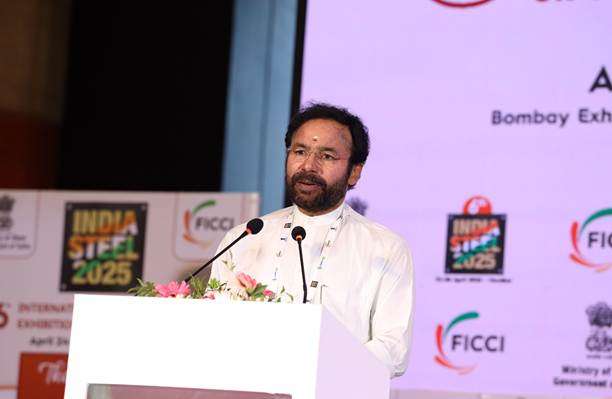
Key initiatives under this mission include the identification of new exploration areas, boosting output from existing mines, increasing coal washing capacity, and auctioning new coking coal blocks to private enterprises. The adoption of advanced technologies such as Stamp Charging has been encouraged to allow the use of high-ash domestic coal without compromising quality. The mission also aims to build 58 MT of coal washing capacity and supply 23 MT of washed coking coal by 2030.
The Minister called upon private stakeholders to actively participate in washeries, beneficiation plants, and block auctions. Pulverised Coal Injection (PCI) trials using domestic coal have already shown promise for import substitution, and greater innovation in beneficiation can further improve outcomes.
Turning to iron ore, the Minister highlighted India’s vast reserves of over 35 BT making it the fifth largest globally. With 263 MT of iron ore produced in FY 2024-25 and 50 MT exported, the country is working to ensure supply keeps pace with growing domestic demand. Currently, we have 179 working iron ore mines, and 126 blocks have been auctioned so far and 38 of them already operational and many more in pipelines. He noted, however, that over 66% of reserves are of medium and low-grade quality and require beneficiation.
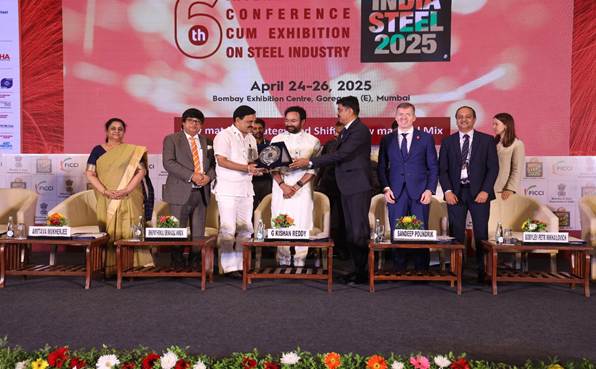
To address this, the Ministry of Mines has proposed a policy currently under public consultation to promote low-grade ore beneficiation. Policy reforms, including revised royalty rates for limestone and low-grade ore, are being pursued to encourage private sector involvement.
The Minister also emphasized the importance of timely utilization of greenfield mines, as reiterated by the Prime Minister. Delays in operationalizing such assets amount to a waste of national resources. The Ministry is working closely with States and regularly reviewing progress with bidders to expedite mine development. Coordination with the Ministry of Environment, Forest and Climate Change (MoEFCC) has also been enhanced to streamline clearances. Several key guidelines have been issued over the past six months, with further reforms in progress.
The coal and mining sectors, the Minister stated, are evolving rapidly to align with sustainability goals and India's climate commitments while reducing import dependence. The government is promoting innovation and embracing a whole-of-government approach to these challenges.
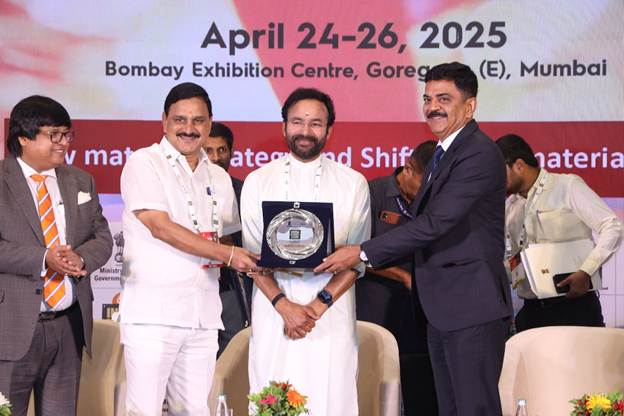
A flagship initiative in this direction is the National Coal Gasification Mission, which aims to achieve 100 MT of gasification by 2030 with an investment of ₹8,500 crore. This initiative promotes the use of high-ash, non-coking domestic coal to generate synthesis gas (syngas), a cleaner alternative for DRI (Direct Reduced Iron) steelmaking. He urged the industry to invest in this transformational technology that not only reduces emissions but also enhances energy security and economic value chains.
In addition, the Minister called on the mining community to focus on recovery of critical minerals from dumps and tailings to support advanced alloys and green technologies. Testing and recovery from existing dumps must be taken up as a national priority.
The journey towards a secure, resilient, and sustainable raw material strategy is a collective one. Under the visionary leadership of Prime Minister Narendra Modi, India is progressing on a bold and ambitious path for the steel sector. The National Steel Policy envisions achieving 300 MT of production capacity by 2030-31 and 500 MT by 2047. The Ministry of Coal and the Ministry Mines are fully aligned with this vision and is taking proactive steps to ensure its realization.
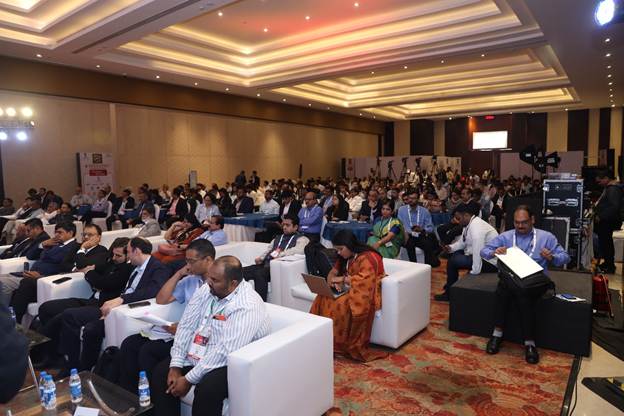
Shri Reddy expressed confidence that through close collaboration between the Centre, State Governments, and industry stakeholders, India will not only meet its raw material requirements domestically but also emerge as a global leader in sustainable, self-reliant steel production. He urged all participants at the conference to contribute actively to shaping policies that will secure a greener and more resilient future for the nation’s steel ecosystem.
Earlier on the inaugural day, Prime Minister Shri Narendra Modi addressed the event via video conferencing, in the presence of several Union Ministers and Chief Ministers from three States, setting the tone for the importance of collaborative development in the sector.
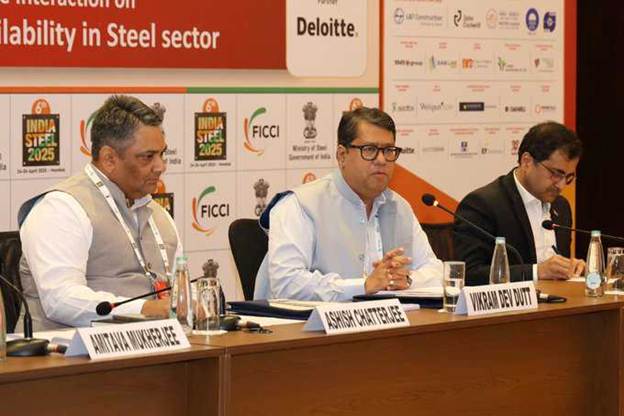
On the second day of Steel Expo, Shri Vikram Dev Dutt, Secretary, Ministry of Coal, participated in the Round Table Interaction on Raw Material Availability in the Steel Sector and highlighted the remarkable shift in the coal sector’s approach. He remarked that the sector is undergoing through a historic paradigm shift from being a legacy sector to becoming a key pillar of the vision Atmanirbhar Bharat. Elaborating on the Ministry’s forward-looking strategy, he pointed out that efforts are being made to raise domestic coking coal production, improve coal washing practices to enhance fuel quality, and promote the adoption of advanced coke-making and gasification technologies to enable cleaner steelmaking. He emphasized that a collaborative approach involving both public and private stakeholders is essential to foster innovation and unlock the full potential of India's coal reserves.
Organized by the Ministry of Steel, India Steel Expo 2025 served as a premier platform for global stakeholders to deliberate on key issues pertaining to growth strategies, sustainable practices in steel production, resilience amidst evolving global economic conditions, and the pivotal role of innovation and digital transformation in enhancing industrial competitiveness. The event witnessed a constructive exchange of perspectives, exhibitions of advanced technologies, and comprehensive discussions on resource efficiency and environmental responsibility. The active participation of the Ministry of Coal further underscored the strategic integration of the coal and steel sectors, highlighting their collective commitment to fostering a sustainable, self-reliant, and forward-looking industrial landscape. The presence of prominent domestic and international participants reaffirmed India’s growing stature in shaping the future of the global coal and steel ecosystem.
****
Shuhaib T
(Release ID: 2124513)
Visitor Counter : 1519